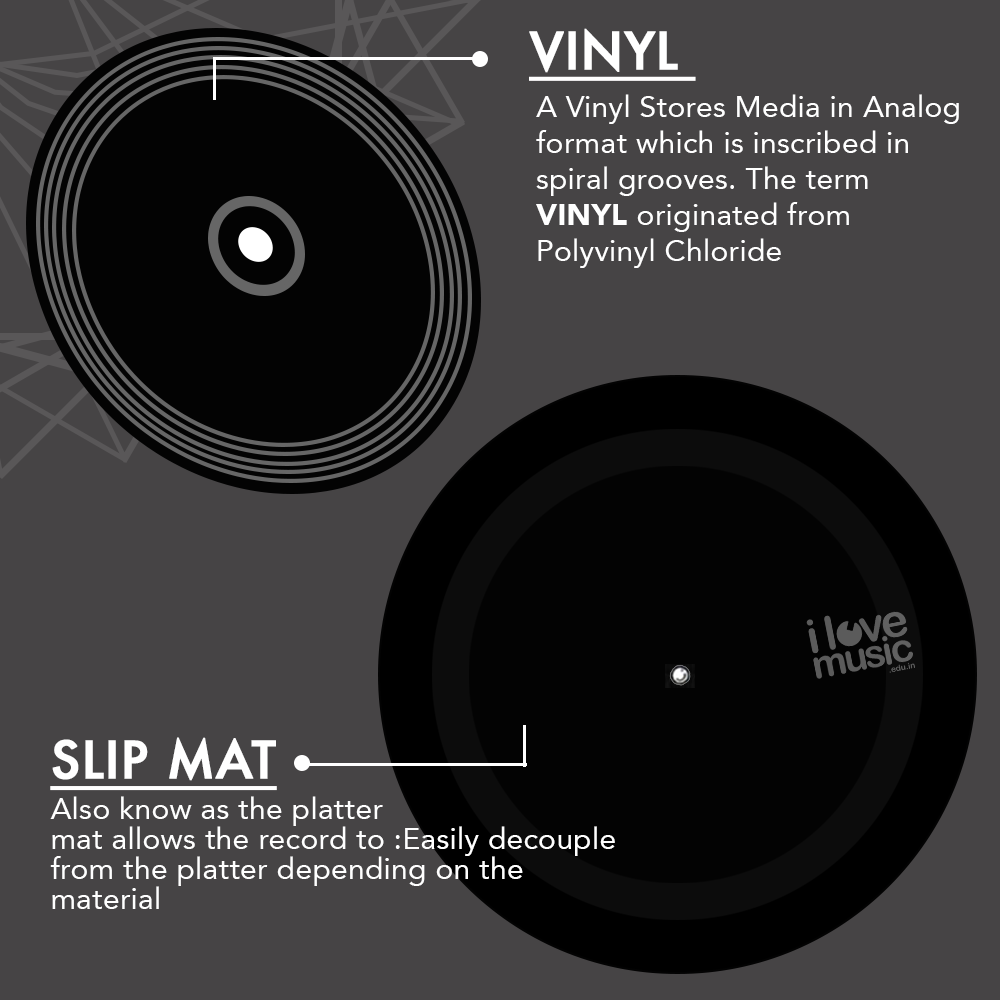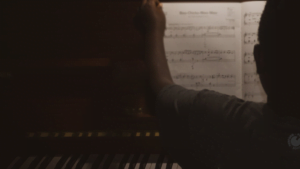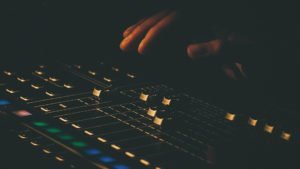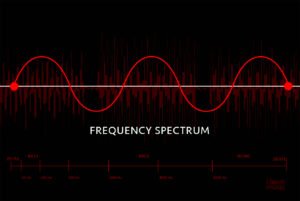The Turntable is back. But did they ever go out of style? One of the longest-running technologies in music, but still in popular manufacture. There is nothing more comparable to that rich sound when a vinyl record is played. No matter how many technologies attempt to replace it – the 8-track, the cassette tape, the CD or the MP3 – turntables are here to stay.
Turntable / Record Players: What’s the difference?
The terms turntable and record player can be used interchangeably. As a matter of fact, technically the turntable is the platter. Some people consider a record player to be an all-in-one device while a turntable, a hi-fi component. However, DJs consider a record player as a low-end or consumer device while turntables as high-end or pro audio equipment.
Let’s get down to breaking the Turntable into all its parts. Here we have taken the standard as the Technics, our preferred industry-standard make.
Parts of a Turntable:



Tonearm Mechanics :
- Counterweight: Balancing the tonearm horizontally, the counterweight affects the stylus’s downward pressure on the record.
- Anti-skate: The anti-skate adjustment controls the tonearm’s side-to-side tension. The needle rides in a groove on the record disc. Furthermore, the needle pulls the tonearm towards the centre of the turntable. Basically, the anti-skate spring setting acts against that force and provides tension adjustment toward the tonearm’s original position.
- Cueing lever: Safely raise and lower the tonearm with the lever. In effect, it prevents unintentional damage to sensitive surfaces. Significantly, the cueing lever design has hydraulic cylinders or other mechanisms in place to ensure smooth functioning.
- Tonearm height adjustment: A set of threaded rings helps to adjust the height of the tonearm
- Tonearm rest: The tonearm is delicate. So it needs to be secured when not in use. The tonearm rest securely holds the tonearm to avoid any damage.
Cartridge and Stylus :
Cartridge :
The cartridge houses the stylus, magnet, and coils.
Stylus:
The tip of the stylus (or “needle”) is normally made of sapphire or diamond. In this case it is fastened to one end of the metal cantilever which has a flexible support bushing as a pivot, and a magnet at the opposite end. The stylus can have a different tip shape based on need. Common shapes of a needle are elliptical or spherical.
Coils:
Electricity passes through coils of copper wire, and create an electromagnetic field inside the cartridge. In effect this contributes to an electromagnetic pulse which acts as a transducer converting audio to an electric signal.
Motor and Base :
Motor:
The motor powers the platter. Based on how it connects to the platter, turntables are of two kinds, direct drive and belt drive. However, Dj’s prefer the direct drive as it gives them more control.
Find More information on the Direct drive and belt drive turntable in the article: Types of Record Players
- Platter Mat: The platter mat material can affect turntable functionality. For example, a rubber mat will grip the record and platter. The DJ applies hand pressure onto the record surface, affecting the speed of the platter and drive motor. Also, felt mats for cueing allow the record to easily decouple from the platter. It spins independently (or not at all) under hand pressure.
- Circuit Board (Housed inside): Controls the electrical supply and functionality.
- Feet: Feet are adjustable for levelling. Additionally, the feet help isolate the platter from external vibration.
(Check out the adjoining images to better understand this)



Other Parts of a Turntable:
- On/Off Switch: It controls the power delivery to the entire unit. Switch on the turntable like you would any electrical device.
- Speed Calibration Pattern: The dot pattern on the side of the platter will appear to stand still under a strobe light when the platter spins at a certain RPM (revolutions per minute). This allows the Dj to visually evaluate playback (rotation) speed.
- Speed Calibration Strobe: The speed calibration strobe light is located at the side of the power switch.
- Start/Stop Button: Obviously controls the platter rotation.
- Speed Selector: The most common rotation speed (RPM) for a vinyl record is 331/3. Another common but smaller vinyl record rotates at 45 RPM and must be used with an adapter due to its larger centre hole diameter.
- Platter: The platter is a solid disk-like platform that holds and rotates the record.
- Cueing Lamp: It illuminates the stylus so the Dj can see where the stylus is in all light conditions.
- 45/33 Adapter: The centre hole diameter in the smaller 7” records are larger. The 45 adapter accommodates these records.
- Head Shell: It is attached to the end of the tonearm, protecting the cartridge within.
- Pitch or Tempo Adjustment: A fader knob controls platter rotation speed, that directly affects playback pitch and tempo.
- Plinth: The plinth is the base of the turntable. In the long run, it keeps crucial parts stable for better playback and less external disturbance.
- Tonearm: The tonearm carries the head-shell and houses audio wiring within. Evidently it has varied adjustment capabilities for vertical and lateral behaviour.



















